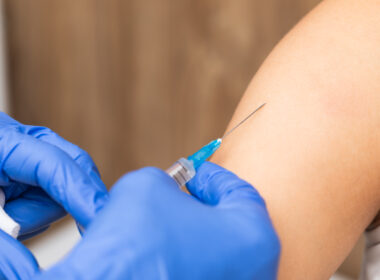In recent years, women seeking to understand their fertility have increasingly turned to diagnostic tools promoted as “potential markers of reproductive potential.” In other words, many women want to know their odds of conceiving, both now and in the future. Prominent among the lab tests available is one related to ovarian reserve, which refers to the number and quality of a woman’s immature eggs. When a woman is told she has low ovarian reserve, the prevailing assumption has been that she has decreased chances of conceiving. But this information may be misleading.
An influential 2017 study published in the prestigious Journal of the American Medical Association (JAMA) shows no evidence that women with biomarkers suggesting decreased ovarian reserve necessarily have lower chances of achieving pregnancy. The authors note that at least three other research trials also found no association between diminished ovarian reserve and fertility in women attempting to conceive naturally.
Given the results of these studies, you may be wondering what low ovarian reserve does mean for your fertility. Below, we’ll delve into the 2017 JAMA study and show how ovarian reserve lab testing stacks up against Fertility Awareness Methods (FAM) as an indicator of one’s overall fertility and reproductive potential.
What is “low ovarian reserve?”
Ovarian reserve refers to the number of immature eggs (oocytes) available for ovulation. During a typical menstrual cycle, one oocyte becomes a mature egg and is released from the ovary into the fallopian tube, thereby making conception possible. Low ovarian reserve (sometimes called “diminished” ovarian reserve) indicates that the population of oocytes has decreased significantly.
However, there is no consensus about the average number of eggs that puts someone in the “low ovarian reserve” group.
In fact, the condition itself is not defined by the actual number of eggs, but by a measure of hormone levels. Ovarian reserve testing measures levels of the protein hormones inhibin B and AMH, which are produced by the follicle (fluid-filled sac) surrounding each egg. As egg supply decreases, so do levels of inhibin B and AMH. Therefore, doctors make judgments about the number and quality of eggs present in a woman’s ovaries by measuring these hormone levels.
Although women of all ages may have low ovarian reserve, normal aging also accounts for a significant decrease in available immature eggs. At 20 weeks of gestation, for example, the female fetus typically has 6–7 million oocytes, while the number decreases to 1–2 million at birth and 300,000–500,000 at puberty. By age 37, the number of oocytes has often decreased to 25,000.
Why do women seek ovarian reserve testing?
Ovarian reserve testing is used as a predictor of one’s reproductive potential because doctors assume that the more eggs available for ovulation each cycle, the better the chances of achieving pregnancy naturally.
This question is of much concern among young women and single women who delay their pregnancy and are particularly eager to know the status of their ovarian reserve.
A population survey study in Dublin, Ireland, found that 65% of women surveyed were interested in having ovarian reserve testing performed, with 76% of women under age 30 and 74% of surveyed single women expressing interest in the testing. For these women, the awareness of their “reproductive potential” may offer peace of mind that they will be able to conceive later in life.
The other group seeking this testing is made of women experiencing fertility issues. In fact, ovarian reserve testing is routinely recommended for women undergoing IVF to help determine the potential success of embryo transfer involving the use of their eggs.
Is low ovarian reserve a reliable predictor of decreased fertility?
In 2017, a research team led by Dr. Anne Z. Steiner, an OB/GYN at Duke, set out to determine if markers of ovarian reserve are indeed predictors of reproductive potential. The results didn’t show what most may have expected.
The study recruited 750 female participants aged 30 to 44 in order to test the hypothesis that diminished ovarian reserve is associated with infertility among women of late reproductive age. Participants had each been attempting to conceive for less than three months and were cohabitating with a male partner. The study excluded women with known infertility pathologies, those using fertility treatments, and those with a male partner with prior infertility. In the study, low ovarian reserve was defined as an AMH value below 0.7ng/mL.
The study found that women with a lower level of AMH, a level suggesting decreased ovarian reserve, did not have a lower probability of conceiving by cycle six or twelve.
In other words, there was no statistically significant difference in probability of conception between women with low ovarian reserve and women with normal AMH and inhibin B values. This applied both to the younger cohort (30–35 years of age) and the older cohort (36–44 years of age).
In reviewing the study and its wider applicability, Dr. Tara Kuhn notes in an article for FACTS that “one must be careful when interpreting and applying the results of a trial to an individual patient.” One major problem with using ovarian reserve testing as sole predictor of one’s overall fertility is that it does not consider the root causes of the condition.
A number of underlying factors other than age—including endometriosis, pelvic infections, prior ovarian surgery autoimmune disorders, and other genetic conditions—may lead to diminished ovarian reserve. Each of these underlying factors has the potential to affect one’s fertility in ways the lab test alone cannot detect. The study is not sufficient to eliminate any correlation between ovarian reserve and a woman’s reproductive potential, but it does reduce the influence of this predictor and shouldn’t be the main driver of fertility treatment decisions.
The study’s results are a compelling indication that, in women of older reproductive age without any known infertility pathologies, biomarkers of low ovarian reserve alone do not correlate to decreased fertility.
Other available tools to help women understand their fertility
If ovarian reserve testing alone isn’t enough to help women understand their fertility, what other options are available?
While ovarian reserve testing relies on testing one or two biomarkers, fertility awareness methods (FAM) involve charting observable biological signs throughout the menstrual cycle. The signs you chart differ depending on the method you choose, and can include cervical mucus observations, monitoring basal body temperature, or checking hormone levels in urine.
In fact, when interpreted by a trained medical professional, your unique chart can offer insight into your body’s hormones and overall health. For one thing, you will learn whether you ovulate regularly. If you have a consistently long or irregular follicular phase (the first phase of your menstrual cycle), for example, it may indicate that a hormonal imbalance or other underlying factor is impacting your egg health and making it difficult for your body to ovulate.
Once you’ve worked with a medical professional to interpret your chart, you will also be able to seek targeted treatment for any threats to your fertility. Taken together, the information logged in your chart can offer a much more complete picture of your reproductive health than ovarian reserve testing alone. To learn more about the methods available to you and resources for learning them, please consult Natural Womanhood’s guide.
Additional Reading
Ovulation: The Main Event of Your Cycle
IVF and Restorative Reproductive Medicine Stories: What they have in common, and how they differ











